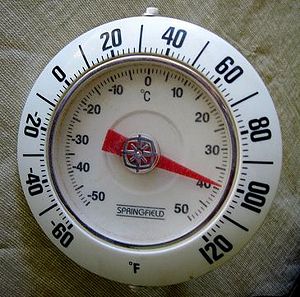Fahrenheit (unit)
The Fahrenheit scale is a temperature scale named after the German physicist Daniel Gabriel Fahrenheit (1686 − 1736), who proposed it in 1724. The symbol of a degree Fahrenheit is °F and the scale has now been largely replaced by the Celsius scale although it is still in use for non-scientific purposes in the United States.
In the Fahrenheit scale, the melting point of water (i.e., ice) at an atmospheric pressure of 101.325 kPa is 32 degrees Fahrenheit (°F) and the normal boiling point of water is 212 °F, placing those two reference points exactly 180 °F apart. Absolute zero in the Fahrenheit scale is −459.67 °F.
For comparison, in the Celsius scale, the melting point of water is 0 degrees Celsius (°F) and the normal boiling point of water is 100 °C, placing those two reference points exactly 100 °C apart. Absolute zero in the Celsius scale is 273.15 °C.
A temperature interval of 1 degree Celsius is equal to an interval of 1.8 degrees Fahrenheit.
